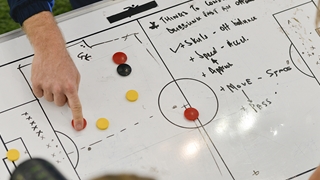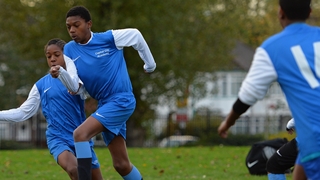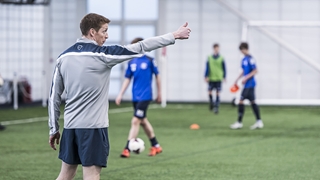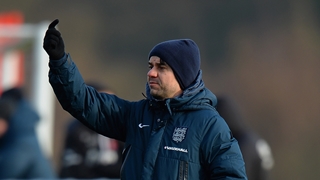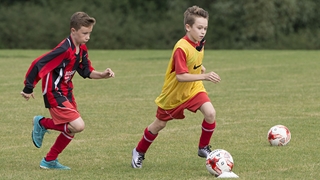
FA skills coach, Jamie Pitman, provides an update on the England DNA Foundation Phase project which aims to provide expert advice, guidance and ideas for coaches working with players aged 5-11.
In March 2016, The FA created a working group tasked with developing the Foundation Phase element of the England DNA project. In the ten months which have followed many groups of staff from across the organisation have contributed to its development which builds on the launch of the England DNA age-phase guidelines in 2015.
One of the key questions asked by the group has been “what does the England DNA mean to a grassroots coach?” and “what support do grassroots coaches need to implement the ideas?”
Research by the group has highlighted a number of issues to be considered to support grassroots coaches:
• Ball work is not just a ball each
• Ball work should include the opposition
• How can I maximise ball contact time and what does this look like?
• How do I teach kids to pass the ball?
• If I only have an hour a week for coaching - what best practices can I deliver to maximise my time?
Ball work is not just a ball each and is best practised opposed
When considering practices to improve ball contact it is important to think about what the game looks like in the age-group you work and not what the game looks like at adult levels. ‘Controlled chaos’ where there are lots of players in an area with lots of decisions to be made are great practices to consider for players in the Foundation Phase.
Practices where the children are having fun such as Bulldog, stuck in the mud, and 1v1 challenge games which include competition, rules, and a scoring system are good examples of ‘controlled chaos’.
Players who can handle possession of the ball individually and under pressure in these types of practice will, in time, be supported by the coach to be comfortable to start sharing possession with teammates and have confidence to take risks and be creative.
How do I teach kids to pass the ball
Before considering if a young player can share the ball, coaches should develop an understanding of where the child is in their development and understanding of the game. Although a player is proficient with possession as an individual and might be able to master the ball comfortably they may not have the brain capacity to see the pass until it is too late or at all. Hence the importance of work on ball mastery through the Foundation phase.
When the coach feels that individuals are showing awareness of when and where to combine and share possession of the ball, positive reinforcement and support can be given and relevant challenges given to individuals to support their development.
Not all players are at the same level of ability and understanding, so it is vital to recognise each player’s development needs in the group. With this awareness and understanding coaches can support individual needs.
If I only have an hour what best practices can I deliver to maximise my time
How to maximise the use of training time is key to player development and enjoyment. Here is one example of how a one hour session may be put together:
1. Arrival activity
Arrival activity or game for the coach or the players to set up themselves
• 3v3 / 3v2 small-sided games
• 1v1 game (Nutmegs)
• One bounce game
• Wembley
• Chase with the ball
• Ball and Wall / SPOT
2. Tag game
Use tag game to support development of fundamental movements related to the game and linked to the objective of the session. The important consideration is realising what the game looks like in the Foundation Phase and reflect on what movements and links you can make to what you see happening in their games and practices.
• Bulldog
• Great escape
• Guards and gates
• Tag games with and without footballs as progressions.
Many other games can be considered, but think what excites the players and what is relevant to the foundation phase.
3. Game Practices
• Small-sided game 3v3/4v4 and others. Consider under-loading or overloading teams for various outcomes when required.
• Consider what format your team plays in the games programme and how best you can develop this in a relevant game practice.
• Challenges are given to teams and individuals to best meet their needs and the outcomes of the session.
There will be further updates on the England DNA Foundation Project over the coming weeks.


